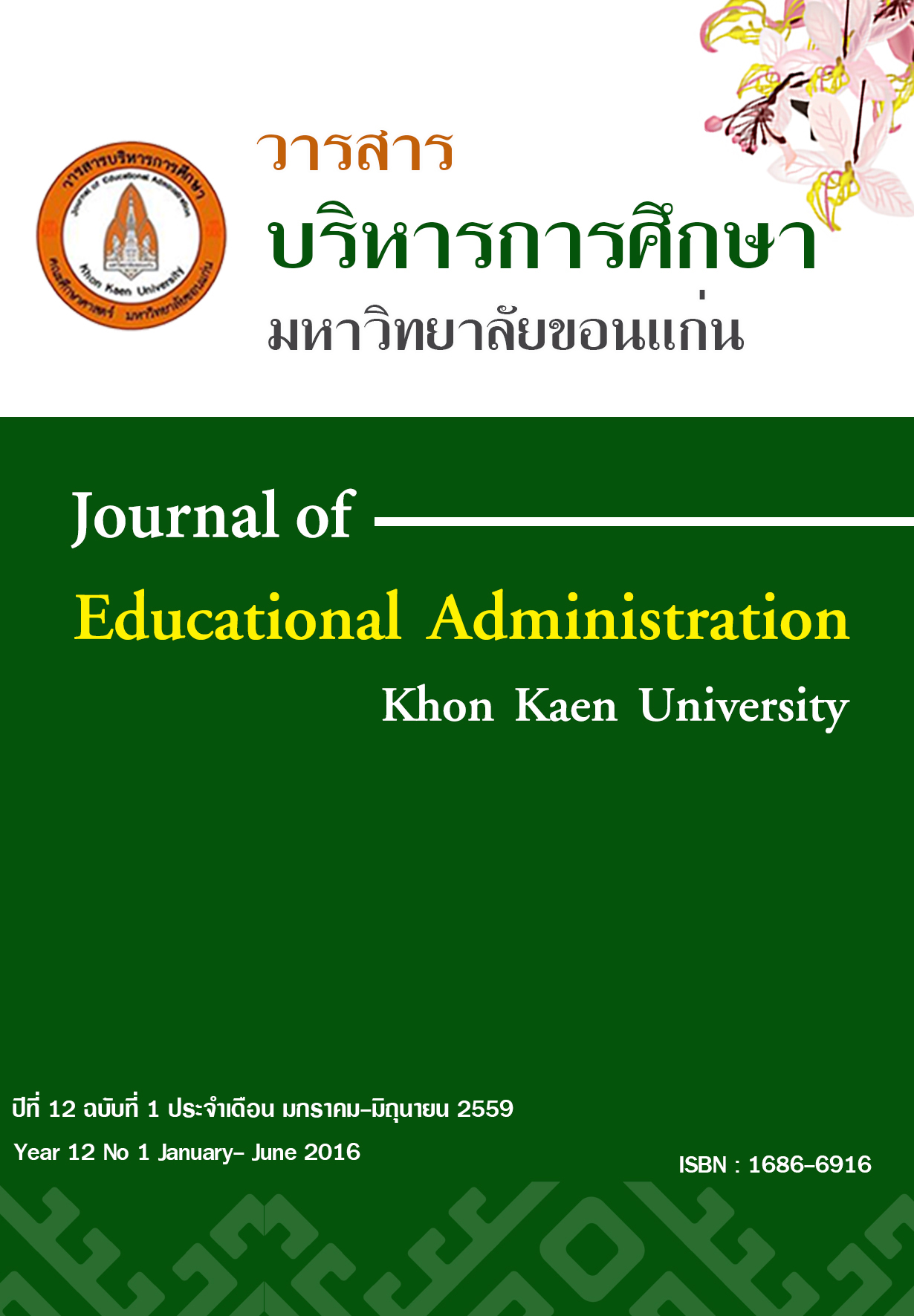การพัฒนาตัวบ่งชี้การเป็นชุมชนแห่งการเรียนรู้ของโรงเรียนพระปริยัติธรรม แผนกสามัญศึกษา สังกัดสำนักงานพระพุทธศาสนาแห่งชาติ The Development of Professional Learning Community Indicator of Pariyattidhamma Schools in General Education Division Under the Off
Main Article Content
Abstract
การวิจัยครั้งนี้มีวัตถุประสงค์เพื่อ 1) พัฒนาตัวบ่งชี้การเป็นชุมชนแห่งการเรียนรู้ของโรงเรียนพระปริยัติธรรม แผนกสามัญศึกษา สังกัดสำนักงานพระพุทธศาสนาแห่งชาติ 2) ตรวจสอบความสอดคล้องของโมเดลการวัดการเป็นชุมชนแห่งการเรียนรู้ของโรงเรียนพระปริยัติธรรม แผนกสามัญศึกษา สังกัดสำนักงานพระพุทธศาสนาแห่งชาติกับข้อมูลเชิงประจักษ์ ศึกษาจากกลุ่มตัวอย่างที่เป็นผู้บริหารและครูสอนโรงเรียนพระปริยัติธรรม แผนกสามัญศึกษา จำนวน 800 รูป/คน ซึ่งได้มาจากการสุ่มแบบหลายขั้นตอน (Mulit-Stage random Sampling) การวิเคราะห์องค์ประกอบขั้นต้น โดยการวิเคราะห์องค์ประกอบเชิงสำรวจ (Exploratory Factor Analysis) ใช้วิธีหมุนแกนแบบตั้งฉาก โดยใช้โปรแกรมคอมพิวเตอร์สำเร็จรูปและวิเคราะห์องค์ประกอบเชิงยืนยัน และการตรวจสอบความสอดคล้องระหว่างโมเดลเชิงทฤษฎีและกับข้อมูลเชิงประจักษ์ โดยใช้โปรแกรมลิสเรล 8.52 ผลการวิจัยพบว่า
1. ผลการสร้างและการพัฒนาตัวบ่งชี้การเป็นชุมชนแห่งการเรียนรู้ของโรงเรียนพระปริยัติธรรม แผนกสามัญศึกษา สังกัดสำนักงานพระพุทธศาสนาแห่งชาติ ด้วยการวิเคราะห์องค์ประกอบเชิงสำรวจ (exploratory factor analysis; EFA) ได้ 6 องค์ประกอบหลัก มีจำนวน 47 ตัวบ่งชี้
2. ผลการตรวจสอบความสอดคล้องของโมเดลการเป็นชุมชนแห่งการเรียนรู้ของโรงเรียนพระปริยัติธรรม แผนกสามัญศึกษา กับข้อมูลเชิงประจักษ์ พบว่า โมเดลมีความสอดคล้องกับข้อมูลเชิงประจักษ์โดยมีค่าสถิติดังนี้ ค่า c2= 818.01 ค่าdf = 833 ค่า p-value = 0.64 GFI= 0.92 AGFI= 0.90 SRMR= 0.03 RMSEA = .00 CN = 437.67 c2/df = .98 ซึ่งเป็นไปตามวัตถุประสงค์ของงานวิจัยและสอดคล้องกับสมมติฐานที่ตั้งไว้
This research study was aimed to 1) develop the indicators on being the professional learning community of Pariyattidhamma schools in general education division under the office of National Buddhism and 2) verify the consistency of measuring model on being the Professional learning community of Pariyattidhamma schools in general education division under the office of National Buddhism and the empirical data. The samples used in the study were 800 administrators and teachers (monk/person) obtained from the multi-stage random sampling. The analysis of initial components was conducted by using the exploratory factor analysis via perpendicular rotation axis method by using the computer package, confirmatory factor analysis, and the verification of consistency between theoretical model and empirical data was monitored by using LISREL 8.52 program.
The findings revealed that:
1. In accordance with the result of establishment and indicators’ development on being the professional learning community of Pariyattidhamma schools in general education division under the office of National Buddhism by using exploratory factor analysis (EFA), it was able to classify into 6 main components and 47 indicators i.e.
2. In relation to the result of the model’s verifying the consistency on being the Professional learning community of Pariyattidhamma schools in general education division and empirical data,it found that the model was consistent with the empirical data by viewing the statistical values as follows: c2= 818.01, df = 833, p-value = 0.64, GFI = 0.92, AGFI = 0.90, SRMR = 0.03, RMSEA = 0.00,CN = 437.67,c2/df = .98 this was regarded with the purposes of this research study and it was also consistent with the setting hypothesis.


